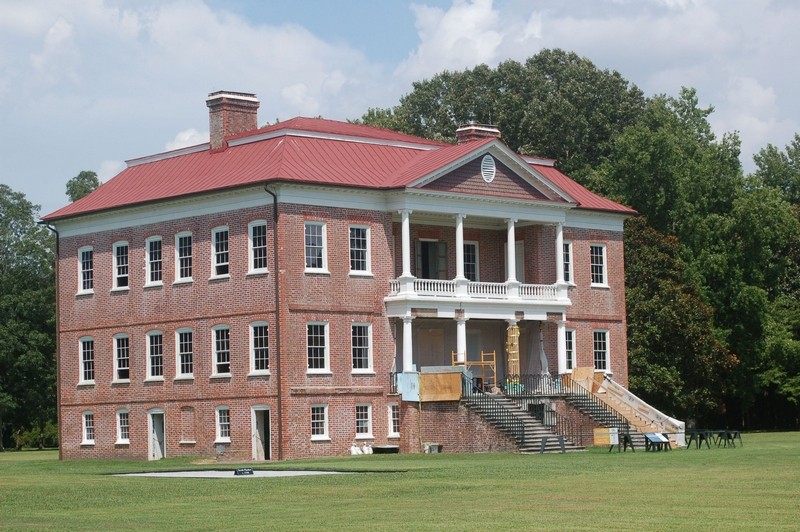Voted the Best Place to See by Condé Nast Traveler.


Drayton Hall’s projecting double portico facing S.C. Highway 61 is considered the front of the house and is perhaps its most iconic feature. The renovation work, seen above, is expected to be done by year’s end. ROBERT BEHRE/STAFF
Great article in the Post & Courier by columnist Robert Behre on our new President and CEO Carter C. Hudgins, PhD., and Drayton Hall’s upcoming plans, including a new facility with exhibit space for many of the site’s collections objects and archaeological artifacts and a new nature trail around its historic rice ponds.
Read the transcript here:
Post and Courier – October 31, 2015
By Robert Behre
It would not be inaccurate to say Carter C. Hudgins began his career at Drayton Hall by mowing the grass many years ago and now he is outstanding in his field.
Hudgins, who followed his father’s footsteps into a career of preservation, recently became president and CEO of the iconic Lowcountry house museum and one of South Carolina’s most famous and enduring works of architecture.
And he says the real change there is still to come.
Hudgins is taking the reins at a pivotal time as the site begins a new life, one directed by a local board, the Drayton Hall Preservation Trust, rather than by the National Trust for Historic Preservation, which has given up control but still retains ownership.
He is quick to detail the plans, which include more staff, new buildings and a continued commitment to preserving and interpreting the mid-18th century house and its grounds.
“We are a world-class site,” he says. “We want a world-class engagement with the public.”
No, there are no plans to put furniture in the grand main house or restore it back to its original 1750 appearance.
But the trust expects to begin construction next year on a new building project that not only will handle the routine functions of a welcome center, gift shop and restrooms but will eventually display many of the furnishings and artifacts connected to the Drayton family and the home they built.
“We are actively acquiring objects,” Hudgins says. “We want to be able to show what was in the house, but not with the goal of refurnishing it.”
Instead, the goal is to expand visitors’ experiences without placing further wear and tear on the historic house itself.
Preservation is challenging here because the house is open to the public, and some 60,000 people a year visit it. That’s more feet and weight than most houses are designed for.
Balancing public access and preservation is the crux of Drayton Hall’s mission, and the new building will help.
Drayton Hall already has plenty of items to put in it. Its collection includes more than one million archaeological artifacts and several hundred individual other objects, including dozens of pieces of furniture, one of which is considered perhaps the finest ever produced in Colonial America.
The grounds also will get work soon, with plans to drain the ponds, trim vegetation from their banks and build a new nature trail around them.
Hudgins says Drayton Hall is working with Ducks Unlimited to make sure this work respects wildlife, not just history.
The new attention to Drayton Hall comes at an auspicious time, as there is a growing realization of the importance of how the history and architecture of the city of Charleston blends into the history and landscape of its surrounding plantations.
This interdependence is highlighted in the Charleston World Heritage’s efforts to get the Lowcountry listed as a world heritage site, the highest such designation possible.
The coalition’s new statement on Charleston’s significance begins, “The plantation culture of Charleston and the surrounding Lowcountry represents an exceptional example of human manipulation of land to exploit natural resources and create a distinct social and economic system that infuenced the geo-cultural region from the late 17th into the late 19th centuries.”
That might sound a bit fancy and academic, but it really boils down to this: Preserving buildings and landscapes like Drayton Hall is every bit as critical as preservation downtown.
Reach Robert Behre at (843) 937-5771 or at twitter.com/RobertFBehre.